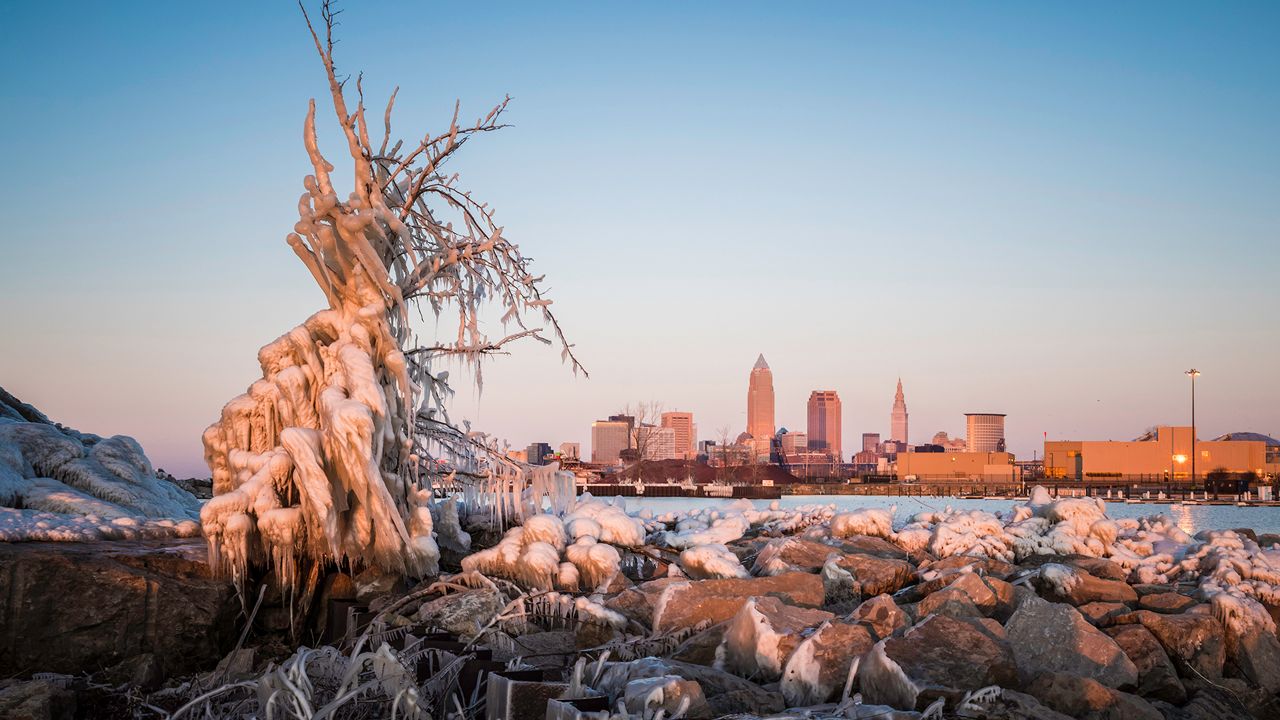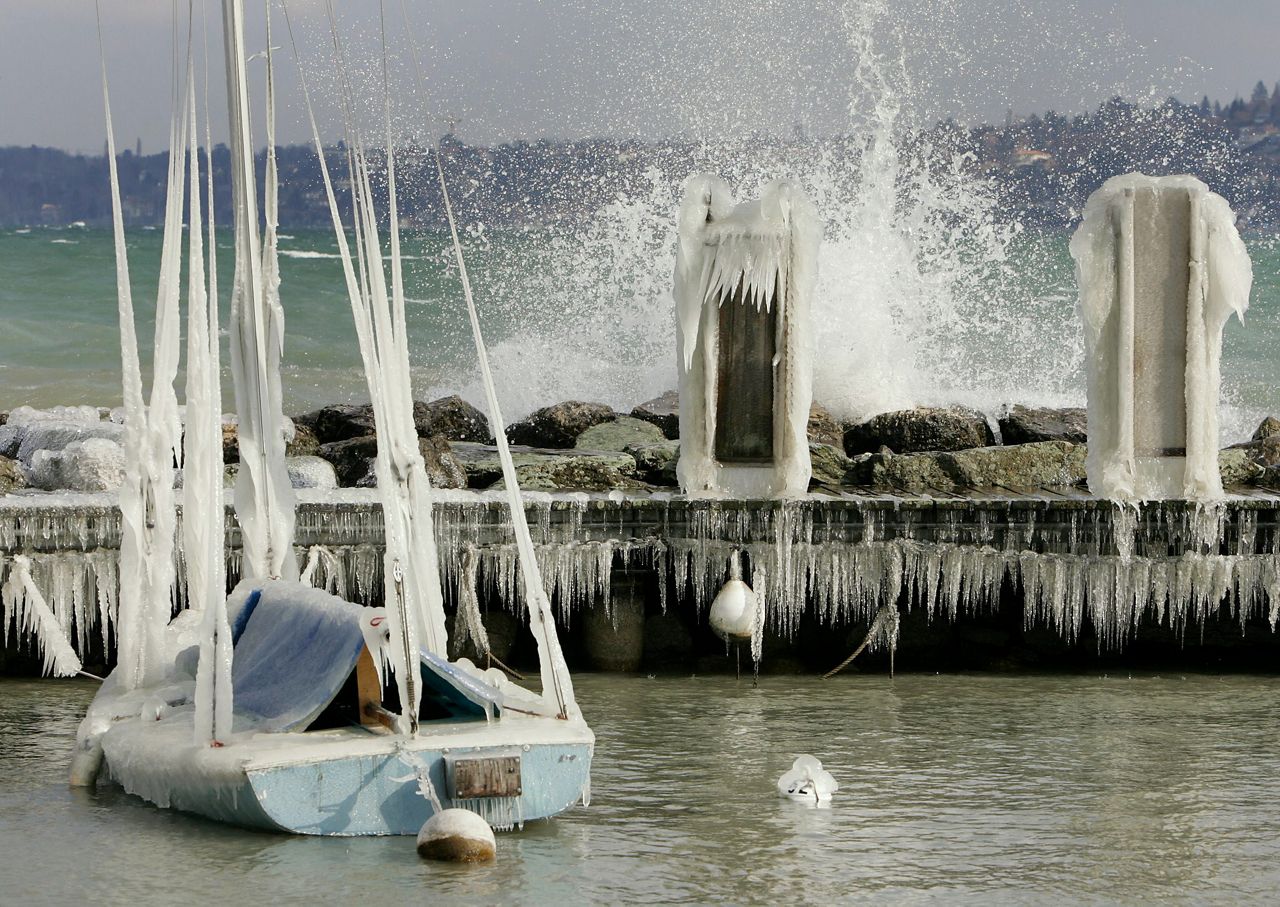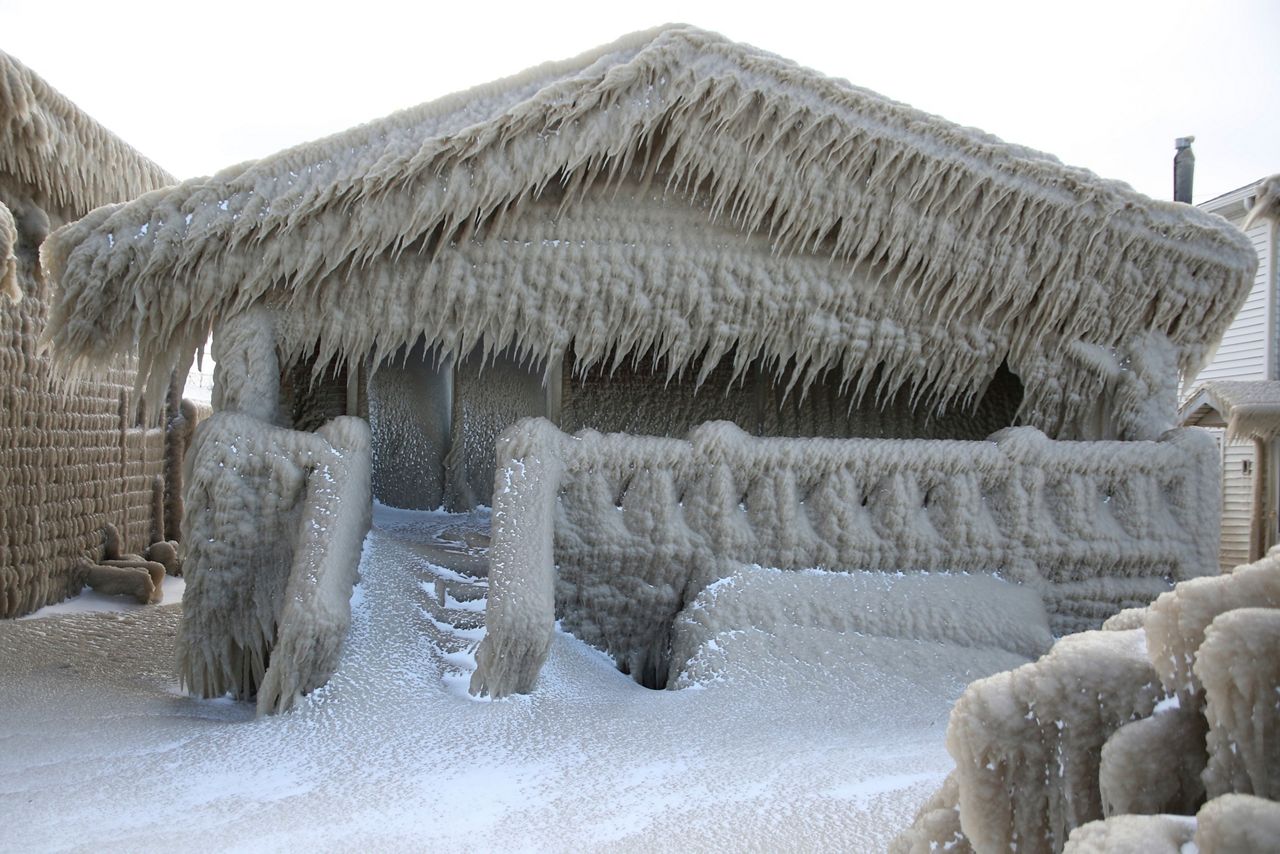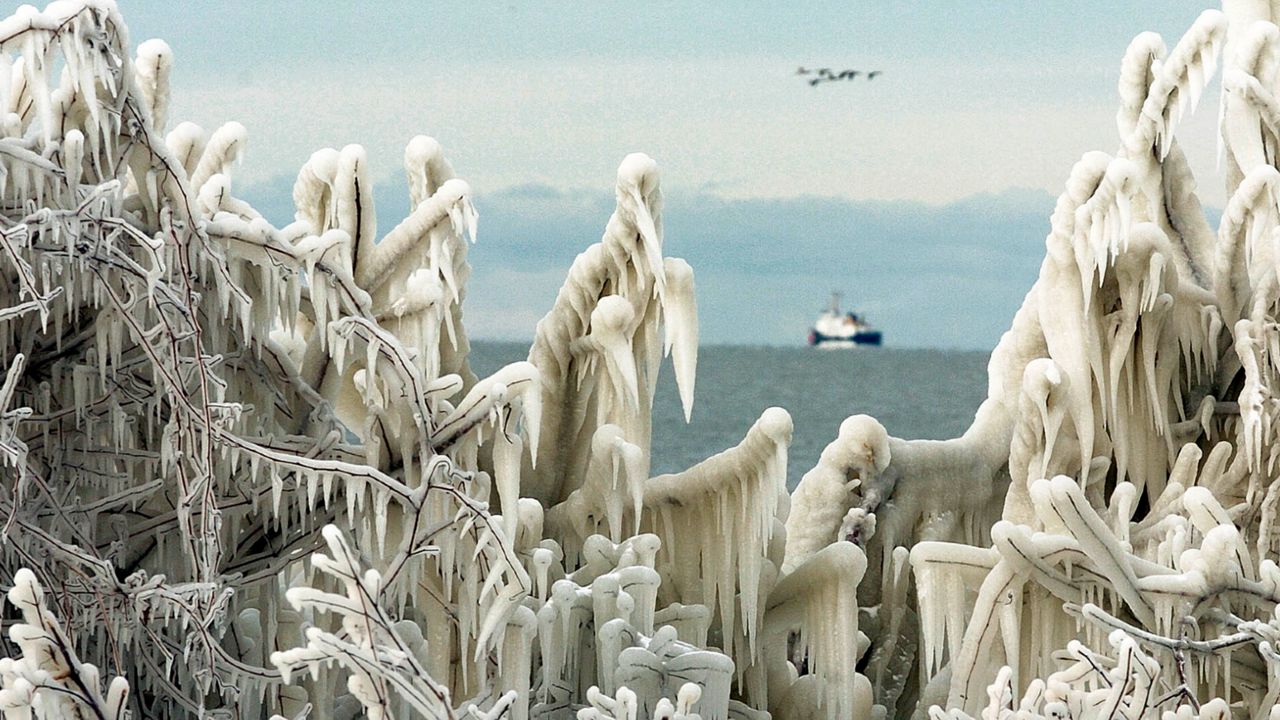Snow, ice and freezing temperatures all define the coldest and darkest season of the year: winter. Encounters with arctic air and powerful winter storms not only responsible for dangerously cold wind chills and significant snowfall on land, but could also spell trouble for mariners at sea.
Along with all the other impacts that come with an arctic blast, freezing spray is one of the less commonly known hazards. Nevertheless, it still packs a powerful punch in the area it affects.
In 2022, a blast of arctic following a potent winter storm resulted in a dramatic drop in temperatures across the eastern two-thirds of the country just days before Christmas.
Along with battling dangerously cold temperatures and wind chills, parts of the northern U.S. saw heavy lake-effect snow and blizzard conditions. But it also brought another phenomenon we rarely see: freezing spray.

A heavy freezing spray event often leaves behind Instagram-worthy footage, featuring picturesque landscapes encased with ice. But this beautiful phenomenon is quite dangerous in reality.
Freezing spray is exactly what the name implies, referring to water (usually from a lake or the ocean) which is sprayed or splashed onto surfaces that are colder than 32 degrees Fahrenheit, and thus freezes on impact.
Even if air temperatures fall below freezing, it doesn't mean freezing spray will occur. A special set of conditions must be at play in order to see icing transform marine vessels and the adjacent landscapes along the coast. Hence, it usually takes an arctic outbreak for it to occur.
With freezing spray, both air and water temperatures matter.
Starting with the most obvious first, air temperatures must drop below freezing. Not just at or a degree below freezing either, but rather, below 29 degrees.
Water temperatures must also become considerably chilly as well, ranging somewhere above freezing, but below 45 degrees.
While freezing spray can happen near the ocean, it's more common along lakes. That's because salt water freezes around 28.4 degrees Fahrenheit, temperatures have to drop even lower along the Northeast Atlantic coast in order for freezing spray to occur, making it less likely to occur there, compared to the Great Lakes region.

Bitterly cold temperatures aren’t the only ingredient needed, either. Powerful winds are just as important. Stronger winds create big swells offshore and large-breaking waves along the coast, both of which produce more “spray” so to speak. In general, we would need to see winds stronger than 18 knots or 20 mph.
More spray, under the right temperatures, will allow for ice to accumulate on the surfaces it comes in contact with.
Provided all three conditions meet the thresholds mentioned above, freezing spray is possible. To what extent, is determined by the magnitude of each condition- strong winds and colder temperatures will probably yield more critical outcomes
Although the end product freezing spray could resemble a frozen fairytale, its looks can deceive us from its dangerous side. In the most extreme cases, heavy icing could lead to ships becoming disabled, or even worse, capsizing out at sea.

While the worst of the impacts appear to affect vessels out on the water, freezing spray brings hazards to land as well. It can cause extensive damage to homes, properties and other infrastructures near and along the shorelines it occurs.

So, the next time the National Weather Service (NWS) warns of the potential for freezing spray, you should keep boating at bay, and stay away from the shore.
Our team of meteorologists dive deep into the science of weather and break down timely weather data and information. To view more weather and climate stories, check out our weather blogs section.



